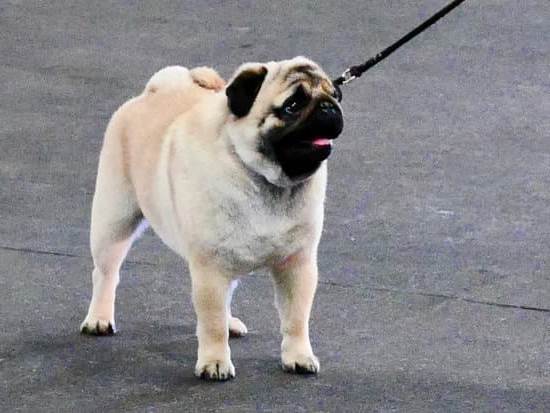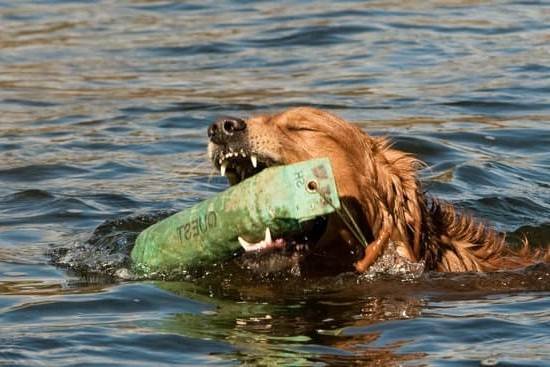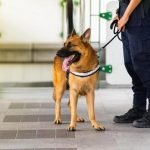Potty training is a crucial aspect of owning a dog that often goes underestimated or misunderstood. When a dog is potty trained, it means they have been taught to eliminate waste in an appropriate location, rather than inside the house or wherever they please. This introductory section will delve into the importance of potty training for dogs and their owners, providing insights into why it matters and how it can benefit both parties.
Having a potty trained dog is not just about maintaining cleanliness within one’s home; it also plays a significant role in fostering a harmonious relationship between the owner and their furry companion. A dog that has been properly potty trained not only saves its owner from constantly cleaning up accidents but also reduces frustration and stress for both parties involved.
Dogs have natural instincts to keep their living spaces clean, and by understanding the concepts of potty training, we can tap into these instincts and establish clear boundaries.
The significance of potty training extends beyond mere convenience. It contributes to the overall well-being and happiness of our four-legged friends. A dog that understands where and when to relieve themselves experiences greater comfort and confidence, resulting in improved mental and physical health.
Additionally, being able to trust that one’s pet is reliable in this aspect allows for more freedom and flexibility when it comes to spending quality time together outside the confines of the home. In essence, potty training facilitates a better quality of life for both dogs and their owners.
What is Potty Training
Potty training is one of the fundamental aspects of dog ownership. It refers to the process of teaching a dog to eliminate waste in an appropriate place, such as outside or on designated pee pads. By establishing a routine and reinforcing desired behaviors, potty training sets the foundation for a well-behaved and hygienic canine companion. This section will explore the concept of potty training in more detail and highlight its importance.
The Definition of Potty Training
Potty training involves teaching a dog where and when they should relieve themselves. It includes both urination and defecation habits. The ultimate goal is for the dog to understand that they should do their business outside or at a specific spot indoors, such as on puppy pads or inside a litter box.
Why Potty Training is Important
Potty training is crucial for several reasons, both for the dog and their owner. Firstly, it promotes good hygiene by preventing accidents and messes inside the house. A well-potty trained dog knows to wait until they are taken outside or to an appropriate spot before eliminating waste.
Additionally, potty training enhances the bond between dogs and their owners. When a dog understands their boundaries regarding elimination, it helps them feel secure and confident in their environment, leading to better overall behavior and obedience.
Moreover, potty training is essential for maintaining health and preventing diseases. Dogs that are not properly trained may develop unsanitary habits like eating feces or spreading bacteria from their waste through licking or sniffing. By establishing proper elimination habits, owners can keep their pets healthier and reduce the risk of contracting illnesses caused by poor sanitation practices.
By understanding what potty training entails and appreciating its significance, dog owners can better appreciate why this aspect of canine education is vital for creating a clean home environment while fostering responsible pet ownership.
Signs Your Dog is Potty Trained
Potty training is an essential aspect of dog ownership, as it helps to maintain cleanliness in the home and promotes good hygiene for both the dog and its owner. Once a dog has been successfully potty trained, there are several signs and indications that can demonstrate their understanding of this concept. By recognizing these signs, dog owners can feel confident that their furry friend is indeed potty trained.
One of the most evident signs that a dog is potty trained is their ability to hold their bladder or bowels for extended periods. A potty trained dog will be able to wait until they are taken outside or given access to the designated bathroom spot before relieving themselves. Additionally, they will exhibit behaviors such as circling or sniffing around a specific area, which indicates that they are searching for an appropriate place to eliminate.
Another indication that a dog is potty trained is their consistency in using the same spot each time they need to go. Dogs have a natural instinct to mark their territory and establish familiar areas for elimination. When a potty trained dog consistently returns to the same spot or area, it shows that they have learned where it is appropriate to relieve themselves.
Lastly, a fully potty trained dog will display an understanding of basic cues and commands related to elimination. For example, they may respond to phrases like “go potty” or “do your business” by immediately assuming the position necessary for elimination. This type of responsiveness demonstrates that they not only understand the concept of going outside but also recognize specific commands associated with it.
Benefits of Potty Training
Potty training is an essential part of owning a dog, as it offers numerous benefits for both the dog and their owner. One of the primary benefits of potty training is that it helps maintain a clean and hygienic living environment. When a dog is properly potty trained, they know where to go to relieve themselves, which prevents accidents inside the house. This not only keeps the home clean but also eliminates unpleasant odors associated with urine or feces.
In addition to maintaining a clean home, potty training also contributes to the overall well-being and happiness of dogs. Dogs naturally want to please their owners, and when they are able to relieve themselves in appropriate areas, they receive positive reinforcement. This boosts their confidence and strengthens the bond between dog and owner.
Furthermore, potty training provides dogs with a sense of routine and structure. Dogs thrive on consistency, so having set times for bathroom breaks gives them predictability in their daily lives. This can help reduce anxiety or stress related to uncertainty or waiting too long to go outside.
Ultimately, potty training benefits both dogs and their owners by creating a harmonious living environment and promoting good hygiene practices. It allows dogs to have a better quality of life by providing them with routines and structure while strengthening the bond between dog and owner.
| Benefit | Description |
|---|---|
| Maintains Clean Home | Potty trained dogs know where to go relieving themselves, preventing accidents inside the house. |
| Promotes Well-being | Proper potty training boosts confidence in dogs and strengthens the bond between dog and owner. |
| Provides Structure | Having set times for bathroom breaks gives dogs predictability and reduces anxiety or stress. |
Methods for Successful Potty Training
Potty training is an essential part of a dog’s upbringing and the responsibility falls on the owner to teach them proper bathroom habits. This section will explore some proven techniques and tips for successful potty training.
Establish a Routine
One of the key methods for successful potty training is establishing a consistent routine for your dog. Dogs thrive on structure and routine, so it’s important to take them outside at regular intervals throughout the day. This includes after meals, first thing in the morning, before bedtime, and after playtime or naps. By following a set schedule, you can help your dog understand when it’s time to go potty and reduce accidents indoors.
Positive Reinforcement
Positive reinforcement plays a crucial role in potty training dogs. Whenever your dog eliminates in the appropriate spot outside, make sure to reward them with praise, treats, or both. This positive association will motivate your dog to repeat the behavior in order to receive more rewards. On the other hand, avoid punishment or scolding when accidents happen as this can create anxiety and confusion for your pet.
Crate Training
Using a crate can be an effective method for potty training dogs by leveraging their natural instincts to keep their den clean. Start by introducing your dog slowly to the crate, allowing them to get comfortable with it before using it as a tool for potty training.
Use the crate as a confinement area when you cannot directly supervise your dog. Dogs generally do not want to eliminate where they sleep, so this will encourage them to hold their bladder until they are let out.
Consistency and Patience
Consistency and patience are vital during the potty training process. It takes time for dogs to fully grasp what is expected of them, so it’s important not to rush or become frustrated with accidents along the way. Stick to the established routine, provide plenty of opportunities for your dog to go outside, and be patient as they learn. Remember that accidents are a natural part of the learning process and should not discourage you or your pet.
By employing these proven techniques and tips, you can set your dog up for success in their potty training journey. Remember to establish a routine, use positive reinforcement, consider crate training, and maintain consistency and patience throughout the process. With time and effort, your dog will develop good bathroom habits and become fully potty trained.
Common Challenges in Potty Training
Potty training a dog can sometimes present challenges that may make the process feel frustrating or overwhelming. It is important for dog owners to be aware of these common challenges and learn how to overcome them in order to ensure successful potty training.
One common challenge in potty training is accidents in the house. It is normal for dogs to have accidents, especially during the initial stages of training. However, it is crucial not to scold or punish the dog when this happens, as it may only create fear and confusion.
Instead, it is advisable to clean up the mess calmly and without making a big deal out of it. Consistency is key in addressing this challenge – make sure to take your dog outside frequently, especially after meals or naps, so they have ample opportunities to go outside rather than inside. Additionally, closely monitoring your dog’s behavior for signs that they need to go can help prevent accidents.
Another challenge that dog owners may encounter during potty training is inconsistency or lack of routine. Dogs thrive on routine and structure, so establishing a consistent schedule for taking them out to eliminate is essential.
This means taking them out at the same times every day and sticking to a routine that works best for both you and your pet. Inconsistencies can confuse dogs and hinder their progress in learning where and when it is appropriate for them to relieve themselves.
| Common Challenges | Solutions |
|---|---|
| Accidents in the house | – Avoid punishing the dog
|
| Inconsistency or lack of routine | – Establish a consistent schedule
|
By addressing these common challenges in potty training and implementing the appropriate solutions, dog owners can overcome obstacles and improve their chances of success. Remember, patience and consistency are key throughout the process. With time and effort, your dog will understand where they should go to relieve themselves, leading to a cleaner and more pleasant living environment for both you and your pet.
How Long Does Potty Training Take
Potty training is a crucial aspect of owning a dog, ensuring that they have good hygiene habits and can relieve themselves in appropriate areas. However, it is important for dog owners to have realistic expectations when it comes to the duration of the potty training process. Every dog is unique and will learn at their own pace, so it is essential to be patient and understanding throughout the training.
The time it takes for a dog to become fully potty trained can vary significantly depending on various factors such as breed, age, previous experiences, and consistency in training. While some dogs may grasp the concept relatively quickly within a few weeks, others may take several months before they consistently go to the designated potty area.
It’s important for owners not to get discouraged if their dog doesn’t meet their expectations within a certain timeframe. Rushing the process can lead to setbacks and confusion for the dog. Instead, focus on gradual progress and celebrate small achievements along the way. This will help maintain motivation and keep both owner and dog engaged in the training process.
| Time Frame | Expectations |
|---|---|
| First few weeks | Introduction to potty training routine; learning where designated area is |
| 1-3 months | Demonstrating more consistent behavior of using designated area; fewer accidents indoors |
| 3-6 months | Establishing long-term habits; significantly reduced accidents indoors |
| Past 6 months | Dog consistently using designated area without accidents indoors; successfully signaling when they need to go outside |
It is important for dog owners to remember that each dog is an individual, and their progress will depend on various factors. Consistent training and reinforcement of positive behavior will help the process move more smoothly. If a dog consistently shows resistance or difficulties in potty training, it may be beneficial to consult with a professional dog trainer or behaviorist for guidance.
By having realistic expectations and being patient throughout the potty training process, owners can set both themselves and their dogs up for success. With time, effort, and consistency, dogs can become fully potty trained members of the family, leading to a cleaner and more harmonious home environment.
Mistakes to Avoid during Potty Training
Potty training a dog can be a challenging process, but avoiding certain mistakes can help make the process smoother and more successful. This section will outline some common mistakes to avoid during potty training, providing dog owners with valuable tips to steer clear of.
- Inconsistent Schedule: One of the biggest mistakes dog owners make during potty training is not maintaining a consistent schedule. Dogs thrive on routine, and having a consistent schedule for bathroom breaks helps them understand when and where they should go. Avoiding this mistake means establishing regular feeding times and taking your dog out for bathroom breaks at consistent intervals throughout the day.
- Punishing Accidents: Punishing your dog for accidents is not an effective way to potty train them. Dogs do not understand punishment in the same way humans do, and it may only confuse or frighten them. Instead of punishing accidents, focus on positive reinforcement by rewarding your dog when they go in the designated potty area.
- Lack of Supervision: Allowing your dog unsupervised access to the house before they are fully trained can lead to accidents and setbacks in their progress. It is important to supervise your dog closely during the potty training process and limit their access to areas of the house where accidents are more likely to occur. Consider using baby gates or keeping your dog on a leash indoors until they are reliably trained.
- Neglecting Consistent Verbal Cues: Consistent verbal cues play an essential role in potty training dogs. Using a specific phrase such as “go potty” or “do your business” every time you take your dog outside can help them associate those words with going to the bathroom. Be sure to use these cues consistently every time you take your dog out, reinforcing the connection between the verbal cue and the desired behavior.
- Not Cleaning Accidents Properly: One common mistake is neglecting proper cleaning after accidents occur inside the house. Dogs have a strong sense of smell, and if the area is not thoroughly cleaned with an enzyme-based cleaner specifically designed for pet accidents, they may be more likely to repeat the behavior in that same spot.
By avoiding these common mistakes during potty training, dog owners can set their pets up for success and make the process more efficient and less stressful. Patience, consistency, and positive reinforcement are key when it comes to potty training your furry friend.
Troubleshooting Potty Training Issues
Potty training can be a challenging process, especially with stubborn dogs. If your furry friend is having trouble grasping the concept of potty training, don’t fret. There are several solutions you can try to overcome these issues and ensure success in your potty training journey.
One common challenge when potty training a stubborn dog is accidents that occur inside the house. Accidents may happen if a dog doesn’t understand where they should go or if they have not yet developed full bladder control. To address this issue, it’s important to establish a consistent routine for your dog.
Take them outside regularly, preferably after meals, naps, playtime, and waking up in the morning or from a nap. Additionally, provide positive reinforcement when your dog eliminates outside by giving treats or praise. This helps them associate going outside with positive rewards.
Another challenge some owners face during potty training is their dog displaying submissive or excited urination. Submissive urination often occurs when a dog feels anxious or scared, while excited urination happens when they become overly excited or overwhelmed. To tackle this issue, it’s crucial to remain calm and avoid any actions that may trigger submissive or excited behavior in your dog.
Gently approach them without making direct eye contact and use soft tones while speaking to help alleviate anxiety. With time and patience, your pup will gain confidence and overcome these behaviors.
In some cases, dogs may refuse to eliminate outside altogether. This could be due to various reasons such as fear of going outdoors, distractions in the environment, or simply not understanding what is expected of them. If your stubborn dog refuses to go outside for bathroom breaks, try creating an appealing outdoor environment by removing any potential distractions and using treats or toys as incentives to encourage elimination outside.
Gradually reduce the amount of treats given over time once they consistently go potty in the designated area. It’s also helpful to establish a cue word or phrase that you use consistently when taking them outside, which will further reinforce the desired behavior.
By implementing these solutions and remaining patient and consistent, even the most stubborn dogs can become successfully potty trained. Remember that every dog is unique, and it may take some trial and error to find the strategies that work best for your furry friend. Stay persistent and positive, and before long, you’ll have a potty trained pup who understands where they should go to do their business.
Maintaining Potty Training Success
Maintaining a potty trained dog is essential for ensuring a clean and odor-free home environment. While it may seem like the hard work is over once your dog is fully potty trained, it is important to continue reinforcing good habits and implementing long-term strategies to prevent any setbacks. This section will provide you with some helpful tips and techniques to maintain potty training success and keep your home clean.
Consistency is Key
Consistency is crucial in maintaining potty training success. Continue to follow a schedule for feeding, watering, and taking your dog outside for bathroom breaks. Consistently bringing your dog to the same designated area outdoors will help reinforce the habit and minimize accidents inside the house. Be diligent in providing regular opportunities for your dog to eliminate, especially after meals, naps, or playtime.
Supervision and Restriction
Even though your dog may be fully potty trained, it is still important to supervise them in the house until you are confident that they will not have any accidents. Keep an eye on their behavior and be alert for any signs that they need to go outside. If you cannot directly supervise your dog, confine them to a safe space such as a crate or gated-off area with easy-to-clean flooring.
Reward and Reinforcement
Continue using positive reinforcement as a way of maintaining good potty behavior. Whenever your dog successfully eliminates outside, praise them lavishly and give them treats or rewards. This will further associate going outside with positive experiences. On the other hand, if accidents happen indoors, avoid punishment as this can only create anxiety or confusion in your dog’s mind.
Cleaning Accidents Promptly
Accidents may occur even with a fully potty trained dog due to unforeseen circumstances or health issues. When accidents happen, it is important to clean them up promptly and thoroughly. Use an enzymatic cleaner designed specifically for pet accidents to remove any odor causing residue. If your dog can smell a previous accident, it may encourage them to eliminate in the same spot again.
By following these long-term strategies, you can maintain your dog’s potty training success and enjoy a clean and hygienic living space. Remember that consistency, supervision, positive reinforcement, and prompt cleaning are key components of maintaining good potty habits in your furry friend. With time and patience, you can ensure that your pup continues to be a well-trained and well-behaved member of your household.
Conclusion
Potty training is an essential aspect of owning a dog, and understanding its importance is crucial for both the dog and their owner. With a potty trained pup, you can experience numerous benefits and enjoy a clean and well-maintained home. By recognizing the signs that your dog is effectively potty trained, you can ensure that they have successfully learned this vital skill.
One of the significant advantages of potty training is the convenience it brings to both the dog and their owner’s life. A potty trained pet knows where to go when nature calls, saving you from constantly cleaning up messes around the house. This not only keeps your environment hygienic but also reduces stress and frustration for both you and your furry friend.
Successful potty training relies on proven techniques and tips that will help you navigate through potential challenges. You must establish a routine, provide positive reinforcement, and be patient during the process. It’s important to remember that every dog is different, so troubleshooting issues may be necessary. However, by following these methods diligently, you are setting your pup up for long-term success in maintaining proper bathroom habits.
In conclusion, having a potty trained pup is rewarding in many ways. Not only does it make your life easier by ensuring a clean home environment, but it also strengthens the bond between you and your furry companion.
By understanding the importance of potty training, recognizing signs of success, avoiding common mistakes, and implementing effective methods, you can reap all the rewards that come with having a well-trained dog. So put in the time and effort now to enjoy a happier and more harmonious relationship with your beloved pet in the future.
Frequently Asked Questions
Are dogs automatically potty trained?
Dogs are not automatically potty trained. Potty training is a process that requires time, consistency, and patience from both the dog owner and the dog itself.
As puppies, dogs have little control over their bladder and bowel movements, and it is up to their owners to teach them where it is appropriate to relieve themselves. Through positive reinforcement, consistent schedules for bathroom breaks, and providing appropriate potty areas or cues, dogs can learn to be potty trained.
When should a dog be potty trained?
The ideal time to start potty training a dog is during puppyhood, generally between 12-16 weeks of age. This is around the time when most puppies have enough physical control to understand the connection between eliminating waste and going outside or in a designated area.
Starting early allows you to establish good habits and prevent accidents from becoming ingrained behaviors. However, it’s important to note that older dogs can also be potty trained successfully with consistent training methods.
Do potty trained dogs have accidents?
Yes, even potty trained dogs may sometimes have accidents. Though rare once they are fully trained, accidents can occur due to various factors such as illness, changes in routine or environment, anxiety or stress, or even simply forgetting their training momentarily. Additionally, puppies are more prone to occasional slip-ups as they continue developing bladder control.
It’s crucial for dog owners not to get discouraged by isolated accidents and remain patient throughout the process of potty training. Consistency in reinforcing good habits will help minimize accidents over time.

Welcome to the blog! I am a professional dog trainer and have been working with dogs for many years. In this blog, I will be discussing various topics related to dog training, including tips, tricks, and advice. I hope you find this information helpful and informative. Thanks for reading!





